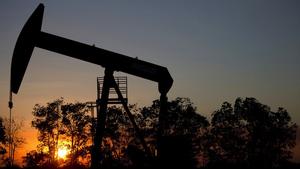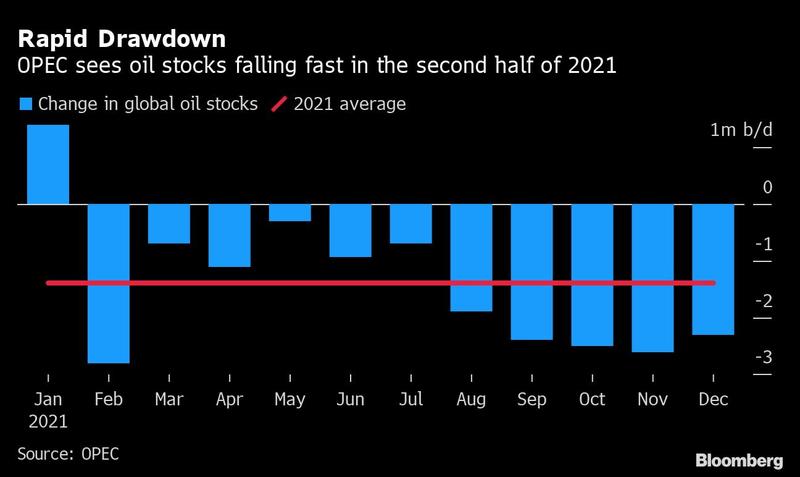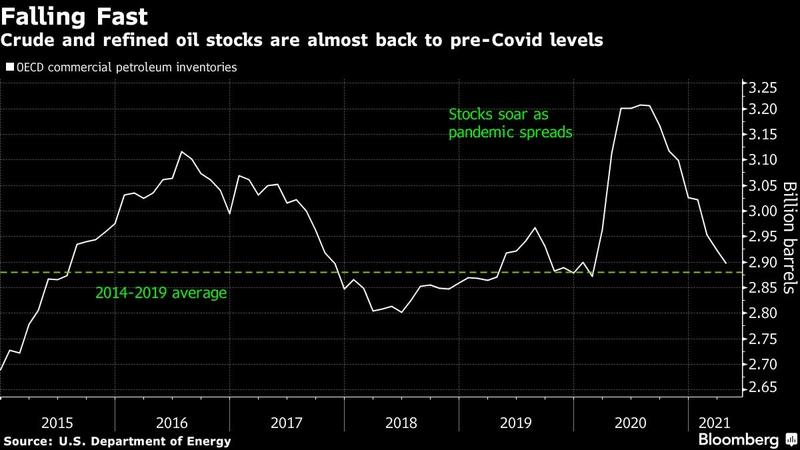 In this file photo, the sun sets behind an oil well in a field near El Tigre, Venezuela. (FERNANDO LLANO / AP)
In this file photo, the sun sets behind an oil well in a field near El Tigre, Venezuela. (FERNANDO LLANO / AP)
OPEC+ stuck to its plan to boost oil output in July, as Saudi Arabia’s energy minister struck a bullish tone about the global recovery from the coronavirus pandemic.
The group will press ahead with an increase of 841,000 barrels a day in July, following hikes in May and June, delegates said after a meeting that lasted less than 30 minutes, making it one of the shortest in recent history. Yet as the market tightens, the alliance now faces a more difficult decision about what to do over the rest of the year.
“The demand picture has shown clear signs of improvement,” Saudi Energy Minister Prince Abdulaziz bin Salman said. “Demand has improved in some of the biggest markets, like the US and China.”
OPEC and its allies have spent more than a year rescuing prices from historic lows and only cautiously adding supply. Now the story is shifting: oil prices have climbed 38 percent since December to more than US$71 a barrel. The surge is fueling inflation concerns and if OPEC doesn’t add more oil, there’s a risk the market becomes too tight, hurting the global economy.
The cartel remains cautious.

OPEC+ will press ahead with an increase of 841,000 barrels a day in July, following hikes in May and June, delegates said after a meeting that lasted less than 30 minutes, making it one of the shortest in recent history
ALSO READ: OPEC and allies postpone oil output talks amid disagreements within bloc
“There are still clouds in the horizon,” said Prince Abdulaziz. “We should continue to consult and closely monitor market fundamentals and be proactive to insure market stability.”
Iran’s potential return to international oil markets is one factor weighing on ministers’ minds. The impact of new variants of Covid-19 is another. While there’s a wide deficit in the market to fill in the second half of the year, those two considerations could see some producers argue for a pause before further hikes.
“COVID-19 is a persistent and unpredictable foe, and vicious mutations remain a threat,” OPEC Secretary-General Mohammad Barkindo said.
The Islamic Republic is in talks to revive a 2015 accord that limited its atomic activities in return for US sanctions relief. While Tehran was seeking to conclude negotiations before its presidential elections on June 18, officials on Tuesday suggested that may not happen until August.
READ MORE: OPEC+ sticks with plans to gently hike supply
If a deal is struck and Washington eases sanctions, analysts forecast that Iran could increase its crude production to 4 million barrels a day from 2.4 million over the next year.
 After July, OPEC+ is scheduled to hold production steady until April 2022, according to the deal signed a year ago to rescue producers from a bitter price war. While the agreement can be renegotiated -- and there’ll be pressure to do so as demand continues to recover -- it provides a fallback position for the group.
After July, OPEC+ is scheduled to hold production steady until April 2022, according to the deal signed a year ago to rescue producers from a bitter price war. While the agreement can be renegotiated -- and there’ll be pressure to do so as demand continues to recover -- it provides a fallback position for the group.
Tuesday’s meeting didn’t tackle the period after July, according to two delegates.
If the alliance doesn’t boost output later this year, prices will face further upward pressure, Fatih Birol, executive director of the International Energy Agency, told Bloomberg Television earlier on Tuesday.
“One thing is clear,” Birol said. “In the absence of changing the policies, with the strong growth coming from the US, China, Europe, we will see a widening gap” between demand and supply.


